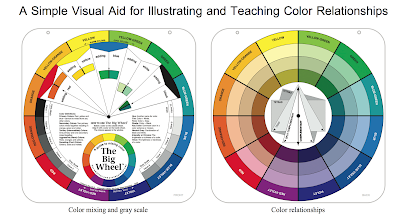Dynamic Rectangle and the 12 Orthogons of Wersin
From:
https://en.wikipedia.org/wiki/Dynamic_rectangle
According to Wolfgang von Wersin's The Book of Rectangles, Spatial Law and Gestures of The Orthogons Described (1956), a set of 12 special orthogons (from the Gr. ορθος, orthos, "straight"[9] and γονια, gonia, "angle"; "a right angled figure", which, as a consequence, is rectangular and tetragonal[10]) has been used historically by artists, architects and calligraphers to guide the placement and interaction of elements in a design.[3][11] These orthogons are:[12]
- Square (1:1 or 1:√1)
- Diagon (1:√2)
- Hecton or sixton (1:√3)
- Doppelquadrat (1:2 or 1:√4)
- Hemiolion (2:3)
- Auron (the golden rectangle, 1:φ)
- Hemidiagon (1:½√5)
- Penton (1:√φ)
- Trion (1:⅔√3)
- Quadriagon (1:(1+√2)/2)
- Biauron (1:2φ)
- Bipenton (1:2√5-2√5)
Wolfgang von Wersin's book includes an extraordinary copy of text from the year 1558 (Renaissance), with diagrams of seven of the 12 orthogons and an invitation from the passage to pay careful attention as the "ancient" architects believed "nothing excels these proportions" as "a thing of the purest abstraction."[13]
All 12 orthogons, when formed together, create an entire unit: a square that is developed into a double square.[14]
Perhaps the most popular among the ortogons is the auron or golden rectangle, which is produced by projecting the diagonal that goes from the middle point of a side of a square to one of the opposite vertexes, until it is aligned with the middle point.
Four of these orthogons are harmonic rectangles: the diagon or root-2 rectangle is produced by projecting the diagonal of a square; the sixton, hecton or root-3 rectangle is produced by projecting the diagonal of a diagon; the double square or root-4 rectangle is produced by projecting the diagonal of an hecton; the root-5 rectangle is produced by projecting the diagonal of a double square (or by projecting 180° both diagonals that go from the middle point of a side of a square to the opposite vertexes).
Two of the most complicated of these figures are; the penton, with proportions 1:√φ is related to the section of the golden pyramid, the bipenton's longer side is equal to the shorter multiplied by two thirds of the square root of three, longer side of the biauron is √5 - 1 or 2τ times the shorter.
The quadriagon is related to the diagon in the sense that its longer side is produced by projecting the diagonal of a quarter of a square. The trion has the height of an equilateral triangle and the width of the side. The hemidiagon (1:½√5) longer side is half the one of the root-5 rectangle and is produced by projecting the diagonal of half a square until it is perpendicular with the origin.
Besides the square and the double square, the only other static rectangle included in the list is the hemiolion, which is produced by projecting 90° or 180° half the side of a square.
..
Use of dimensions related to an orthogon as an under-structure system (or template for a design) ensures that the various parts will relate to the design as a whole. Marcus Vitruvius Pollio in Book Three of "De Architectura" (known currently as "The Ten Books of Architecture") explains:
PLUS MORE


